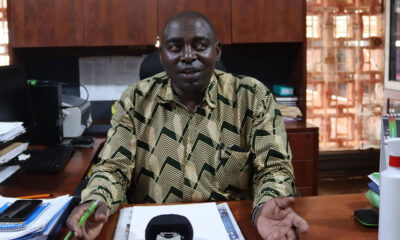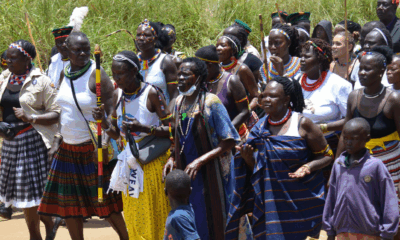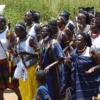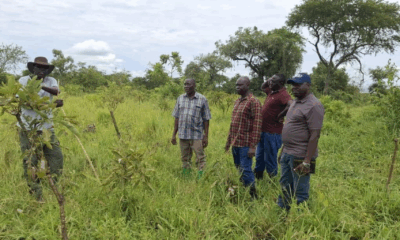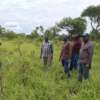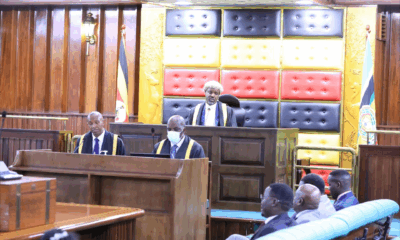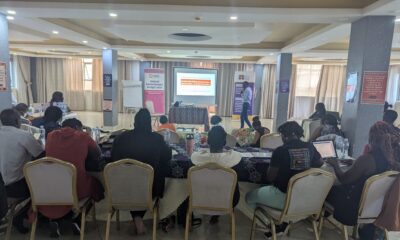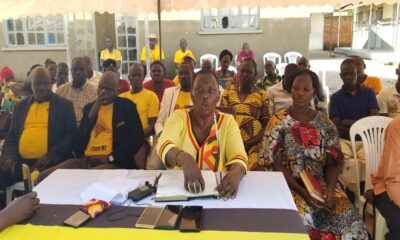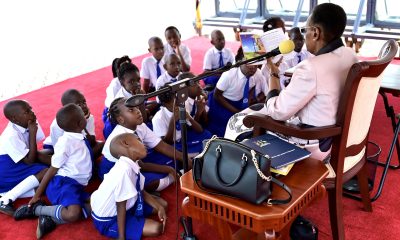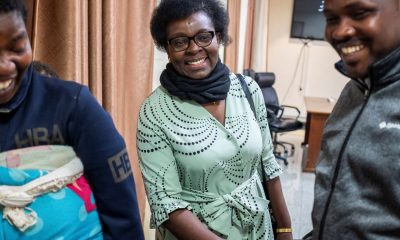News Feature
No Solution Yet for Karimojong Street Kids
“We had to run away at night from home [Manyatta – kraal setting] because cattle rustlers came and took our cows. I was with my mother. We walked to Kangole [Trading Centre], then Katakwi (Town Council), [in the neighbouring Teso sub-region]. After two days of loitering around, we found ourselves in a truck. And we got to Kampala.”
Ana Naakadiol, 12, from Napak District of Karamoja Sub-region, narrated this ordeal to an official from the Spanish National Committee for UNICEF (SNCU), recently in Kampala. She continued; “My mother and I ended up under a veranda in Katwe. For some time that is where we spent our nights.”
It is a familiar story of Karimojong street children begging on the streets of Kampala. Many of them are young girls.
Many of the boys between the ages of 8 and 15 are ending up in the streets of Losaite, Kosiroi, Tapac and Napawacokon trading centers in Moroto District, engaged in mining activities during the day before returning to the streets at night. Others are in Kotido District doing petty trade and domestic work, for the girls; while boys end cattle herding in remote forested areas.
In Kampala alone, there are an estimated 2000 of these street children. Overall, there are an estimated over 4,000 of the children in many towns, especially in Eastern Uganda; and some ending in Kenyan towns.
Katwe is a popular slum area in Kampala City. Complaining of hunger, Naakadiol’s mother asked her and other two girls to escort her and find work to support themselves. They ended up in a home of Somalis. They were immediately recruited as maids to do house chores of washing clothes, utensils, tidying-up the house, baby-sitting and cooking.
While she was doing these chores daily, every time Naakadiol saw girls her age going to school. She had stopped schooling in 2023, in Primary Two (P.2). Her mother told her they neither knew how to get a school here, nor did they have the resources to go to school.
By the hand of providence, Naakadiol was sighted by some people of the Koinonia Pentecostal Ministries. They were engaged with the SNCU, the Spanish arm of the United Nations Children’s Fund (UNICFF), a non-governmental organization (NGO), involved in resettling street children from the Karamoja Sub-region. In Kampala, SNCU has been working with other NGOs and Kampala Capital City Authority (KCCA), to address the needs of Karimojong street children.
UNICEF highlights the children’s education as a fundamental right. That is how Naakadiol ended in Lokodio-Kodioi Primary School (PS) in Napak. With the support from SNCU, she now has access to school supplies, uniforms and learning materials that help in class.
Ms. Christine Koli, UNICEF’s Child Protection Officer in Karamoja, said that statistics in Napak District show the highest level of “multi-dimensional child poverty” in the country. She added: “From the time the children were resettled in school, we can testify that we have seen positive results. These children are happy and are healthier than when they came. They have integrated well, and you cannot differentiate them from those they found in the schools.”
The Headmistress of Lokodio-Kodioi PS, Ms. Martha Nabok, says that out of 958 pupil enrolment, 117 have been integrated with help from KCCA and SNCU. The school administration counsels the children physically and spiritually, and guides them on socialization with other pupils to acclimatize with the school environment. She adds that they have “developed into learners with skills, talent and values.”
For the boys in the various town centers in Moroto, the LC5 Chairperson, Mr. David Koryang, attributed the increase in street children to poverty, hunger and domestic violence. Many families have taken their children to mining sites, where they are used for cheap labour. “Children are carrying stones and soil at these sites in exchange for small amounts of money to buy food,” Koryang explained, adding that, “Some struggle to return home and end up sleeping at the mines or in nearby trading centres.”
Koryang emphasised the need for urgent action, stating that authorities plan to round up the children and enroll them in school. He also warned that parents who allow their children to loiter on the streets may face arrest. “They work in the mines all day and return exhausted, yet they have nothing to eat. They are being exploited at the mining sites, where they spend long hours in harsh conditions for little pay. These children are living miserable lives.”
Other local officials say that many parents in Karamoja have abandoned their role of nurturing and providing for their children, exposing them to child labour, trafficking, sexual exploitation and lack of education. Authorities and community leaders now face mounting pressure to rescue children from exploitation and provide them with the basic needs.
Current Government efforts to eliminate these unfavourable situations have proved futile. The former Bishop of the Church of Uganda, Karamoja Diocese, the Reverend Joseph Abura, highlighted the harsh realities that Karimojong children endure. He said many children flee to the streets due to neglect and deprivation.
“Karimojong children are often denied the basic rights, forcing them to seek a better life elsewhere,” Abura derided. He complained that child labour is a serious issue requiring urgent intervention. “While churches can advocate for change, law enforcement is necessary to prevent child exploitation in the mining areas. Education is the only way to rescue these children, but unfortunately, there is little enforcement of education policies here,” he scoffed.
Comments




